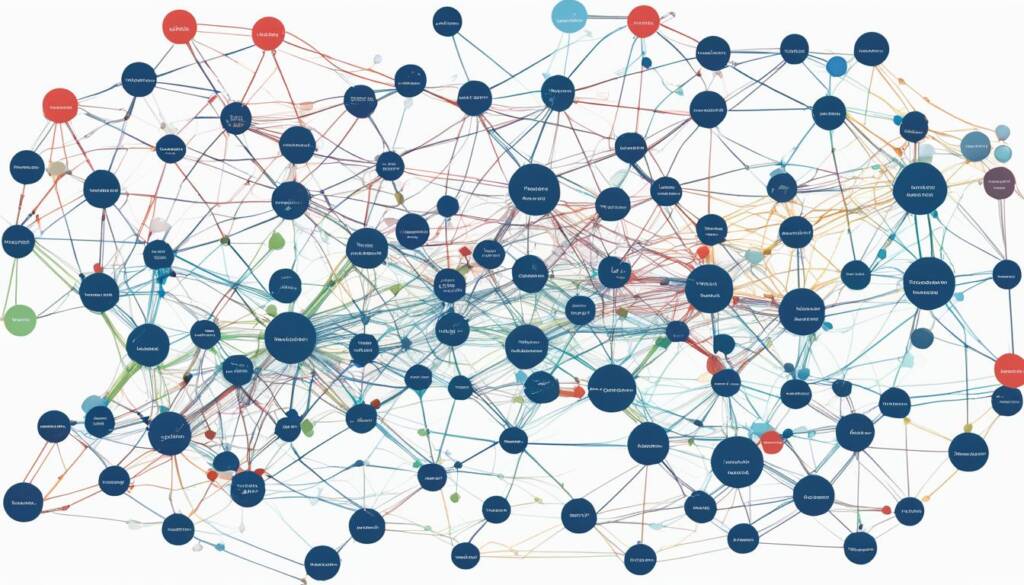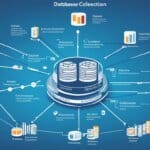Table of Contents
NoSQL databases have become increasingly popular due to the rapid decrease in storage costs and the need to store and query large amounts of data in various formats. They provide developers with the flexibility to store unstructured data and adapt to changing requirements. NoSQL databases also offer advantages for cloud computing, allowing for data distribution, scalability, and intelligent geo-placement.
There are different types of NoSQL databases, including document databases, key-value databases, wide-column stores, and graph databases. These databases have unique features and are suitable for different use cases.
NoSQL databases differ from relational database management systems (RDBMS) in terms of data modeling, flexibility of the schema, scaling techniques, support for transactions, and reliance on data-to-object mapping.
When it comes to data management, NoSQL databases provide flexible storage solutions that cater to the diverse needs of modern applications. They offer various data models and advantages that make them an attractive choice for developers and organizations.
Types of NoSQL Databases
NoSQL databases can be classified into four main types: document databases, key-value databases, wide-column stores, and graph databases. Each type offers unique features and is suitable for different use cases.
1. Document Databases
Document databases store data in JSON-like documents, providing flexibility in data structure and easy adaptation to changing requirements. They are ideal for applications that deal with semi-structured data, such as content management systems and customer relationship management platforms.
2. Key-value Databases
Key-value databases store data in a simple key-value structure, making them suitable for user preferences and web applications. They offer high-speed read and write operations, making them ideal for use cases requiring real-time data retrieval, such as session management and caching.
3. Wide-column Stores
Wide-column stores organize data in tables, rows, and dynamic columns, making them optimal for analytics use cases. They excel in handling large volumes of structured and semi-structured data, making them a popular choice for data warehousing and business intelligence applications.
4. Graph Databases
Graph databases focus on the relationships between data elements and are commonly used in systems that map relationships, such as social media platforms, recommendation engines, and logistics applications. They provide efficient traversal of interconnected data, enabling complex queries and analysis.
In summary, knowing the different types of NoSQL databases helps organizations choose the appropriate one based on their specific data requirements and use cases.
| Database Type | Use Cases | Strengths |
|---|---|---|
| Document Databases | Content management systems, customer relationship management | Flexibility, easy adaptation, semi-structured data |
| Key-value Databases | User preferences, web applications | High-speed read/write, real-time data retrieval |
| Wide-column Stores | Data warehousing, business intelligence | Handling large volumes, structured/semi-structured data |
| Graph Databases | Social media platforms, recommendation engines, logistics | Relationship mapping, complex queries, efficient traversal |
Choosing the right type of NoSQL database is crucial for achieving optimal performance and scalability in data storage and retrieval.
Difference between RDBMS and NoSQL Databases
One key difference between relational database management systems (RDBMS) and NoSQL databases lies in the way data is modeled. While RDBMS use a fixed schema, NoSQL databases offer flexibility in schema design, allowing for easy adaptation to changing data requirements.
NoSQL databases excel in scalability, using horizontal scaling techniques to add capacity as needed. They also offer support for specific data models and workload patterns, such as key-value and wide-column structures.
While RDBMS provide strong ACID transaction support, some NoSQL databases, like MongoDB, also support ACID transactions. However, the data modeling approach in NoSQL databases often eliminates the need for multi-record transactions.
The Advantages of NoSQL databases over RDBMS
- NoSQL databases provide flexible schema design, allowing for easy adaptation to changing data requirements. This flexibility enables developers to make adjustments without the need for extensive schema modifications. In contrast, RDBMS requires a predefined schema before any data can be stored.
- NoSQL databases excel in scalability. They can horizontally scale their storage capacity by adding more servers to the database cluster. This allows for handling high volumes of data and supports the growth of data-intensive applications.
- NoSQL databases offer specific data models and workload patterns, such as key-value and wide-column structures, to meet different application needs. These specialized models significantly improve performance and efficiency for specific use cases.
- While RDBMS provides strong ACID (Atomicity, Consistency, Isolation, Durability) transaction support, NoSQL databases are not limited in this aspect. Some NoSQL databases, like MongoDB, have introduced ACID transactions, allowing for transactional consistency in specific scenarios.
Overall, the use of NoSQL databases offers significant advantages in terms of flexibility, scalability, and tailored data models. While RDBMS remains a reliable choice for certain use cases, NoSQL databases provide a modern approach to data management, adapting well to fast-paced Agile development and accommodating the storage and processing needs of diverse and large-scale datasets.
Why Choose NoSQL?
NoSQL databases are widely adopted in various industries for their ability to handle large and diverse datasets. This makes them ideal for various use cases, including fast-paced Agile development. With their flexible schema and rapid iteration, NoSQL databases enable developers to adapt quickly to changing requirements, supporting the dynamic nature of Agile projects.
Another advantage of NoSQL databases is their ability to store both structured and semi-structured data. This makes them well-suited for applications such as blogging platforms, e-commerce systems, and real-time analytics. Whether it’s organizing blog posts, managing product catalogs, or processing streaming data, NoSQL databases excel in accommodating diverse data formats.
Moreover, NoSQL databases can handle huge volumes of data, making them a preferred choice for big data and IoT use cases. With their scale-out architecture, organizations can easily add more capacity as data grows, ensuring seamless scalability without compromising performance. NoSQL databases also align with modern application paradigms like microservices and real-time streaming, providing the necessary foundation to support these emerging technologies.
Despite common misconceptions, NoSQL databases can effectively store relationship data. Many NoSQL databases offer built-in features for handling relationships, ensuring efficient storage and retrieval of interconnected data. Additionally, several NoSQL databases, such as MongoDB, also support ACID transactions, further debunking the notion that relational databases are the only option for transactional consistency.
FAQ
What are NoSQL databases and why are they popular?
NoSQL databases are flexible storage solutions that allow developers to store and query large amounts of data in various formats. They have become popular due to their ability to handle unstructured data, adapt to changing requirements, and provide advantages for cloud computing.
What are the different types of NoSQL databases?
NoSQL databases are classified into four main types: document databases, key-value databases, wide-column stores, and graph databases. Each type has unique features and is suitable for different use cases.
How do NoSQL databases differ from relational database management systems (RDBMS)?
NoSQL databases differ from RDBMS in terms of data modeling, flexibility of the schema, scaling techniques, support for transactions, and reliance on data-to-object mapping.
Why choose NoSQL databases?
NoSQL databases are suitable for fast-paced Agile development, can handle both structured and semi-structured data, and are capable of handling huge volumes of data. They support scale-out architecture and can meet the requirements of modern application paradigms like microservices and real-time streaming. Despite misconceptions, NoSQL databases can effectively store relationship data and many support ACID transactions.













